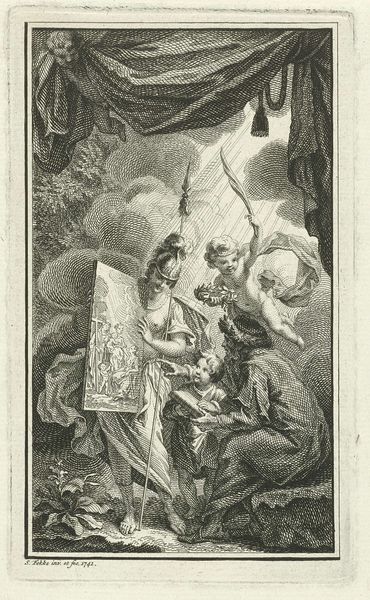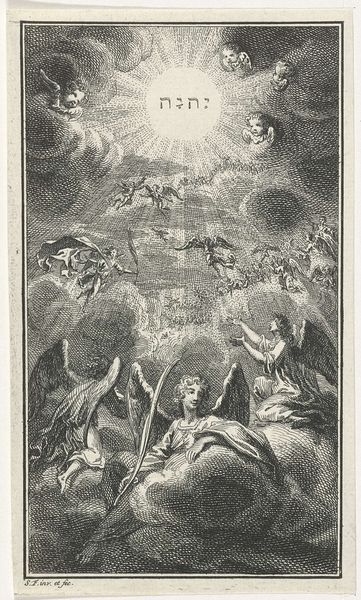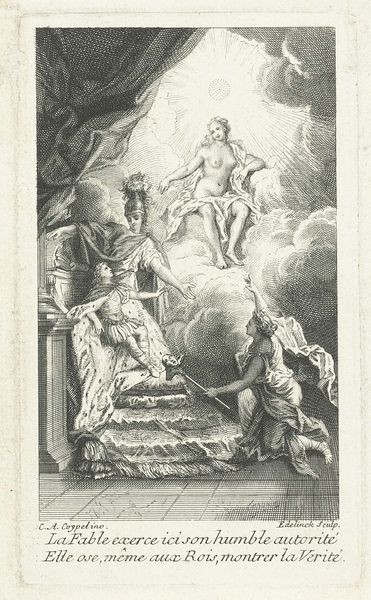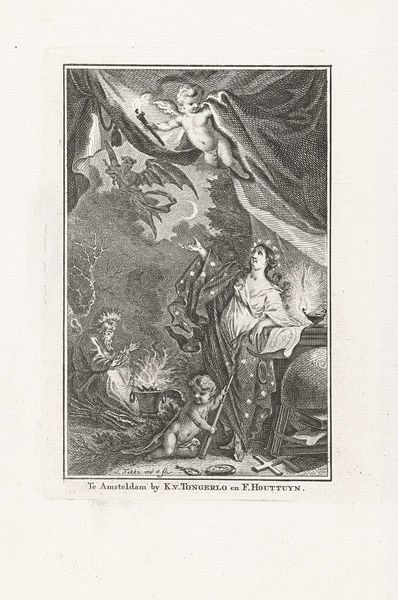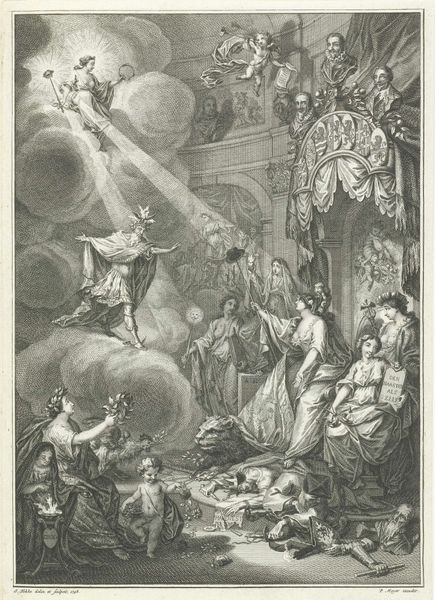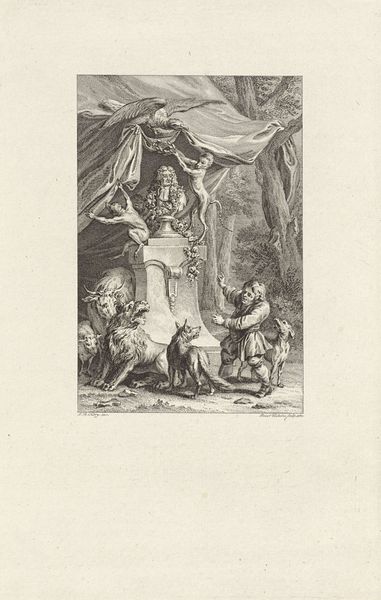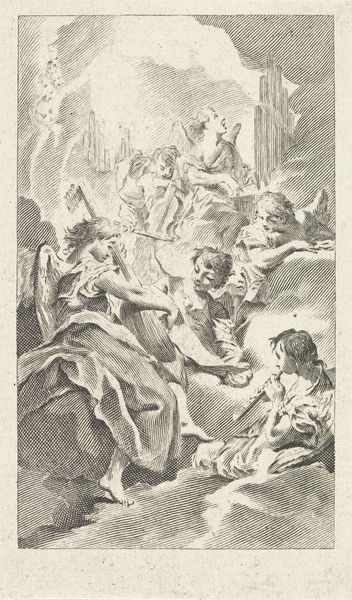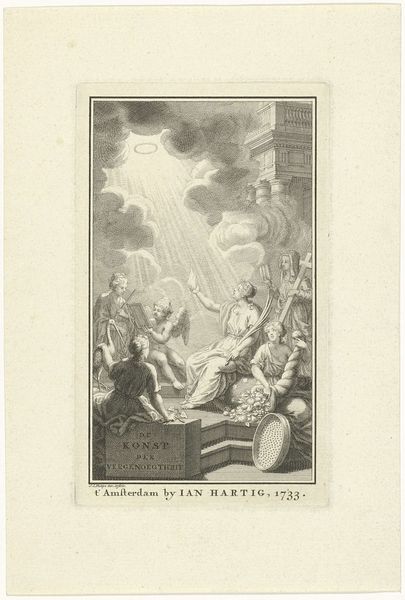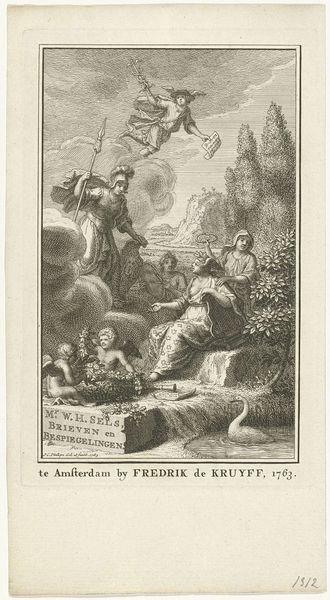
Dimensions: height 194 mm, width 148 mm
Copyright: Rijks Museum: Open Domain
Curator: What strikes you first about this image, “Saul at the Witch of Endor,” an engraving from 1766 by Simon Fokke? Editor: The sheer drama! The light and shadow, the figures contorted in fear... it feels like a stage set for a nightmare. The ghostly apparition rising from the smoke is especially unnerving. Curator: Indeed. Fokke expertly uses the line technique of engraving to build incredible tension, doesn't he? It's an illustration of a specific moment, drawn from the Books of Samuel. We are witnessing Saul, the King of Israel, consulting a witch in disguise. Samuel, the prophet, had died, and the biblical narrative frames it as Saul secretly sought a medium to summon Samuel’s spirit to ask advice about an impending battle with the Philistines. Editor: The summoning of the dead... always a potent symbol. What strikes me is how universally it resonates. The anxiety about the future, the desire to know what's coming – that’s embedded deep in human culture. The figure of Saul almost pleading in the lower corner really captures a primal desire. Curator: This work speaks volumes about the visual culture of its time as well. The narrative art of the Baroque, of which this engraving exhibits several traits, sought to illustrate religious and historical tales, to make moral points within contemporary sociopolitical dynamics. Consider the composition – everything pulls our eye toward the central apparition, highlighting the gravity of defying divine law for short term security. Editor: And the shadowy figures in the tent behind the witch – are those demons, or simply the product of Saul's terrified imagination? Either way, the image conveys a real sense of transgression, of boundaries being crossed. Curator: These iconographic representations became increasingly complex and stylized, and the interpretation would surely have evolved, yet images like this helped maintain the religious and political frameworks that characterized the Netherlands. Editor: Knowing the context makes it all the more powerful. Fokke captured more than just a biblical scene, the symbolic anxieties regarding political stability. I'm leaving this piece contemplating the delicate line between power, desperation, and the enduring allure of the forbidden. Curator: For me, seeing it reveals a compelling glimpse into the religious storytelling and imagery that pervaded society at that moment in the 18th century.
Comments
No comments
Be the first to comment and join the conversation on the ultimate creative platform.

